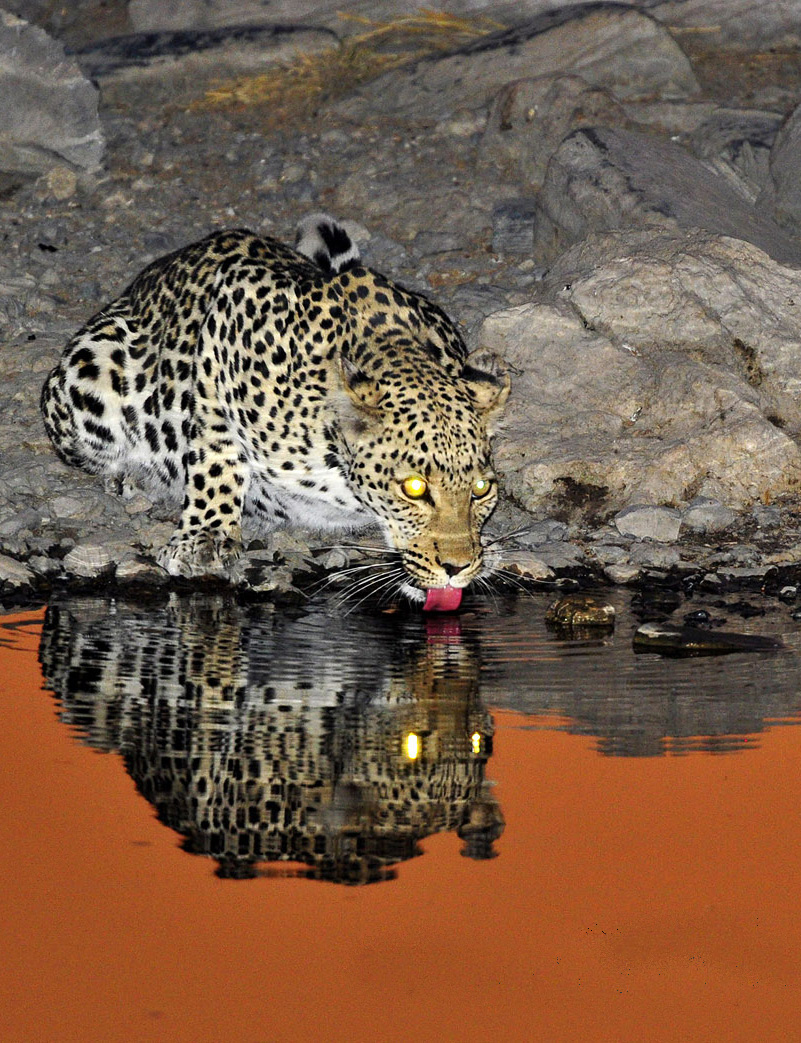1. Compose the scene – don’t just ‘point and shoot’ – think before you depress the shutter button. Think in terms of the rule of thirds – where have you placed the subject in the frame, where is the horizon – placing the subject or the horizon in the middle is not good. Also think if you have left ‘active space’ for the subject to look out the frame.
2. Focus On The Eyes – if your subject is not sharp but the eyes are in focus then you may still have a winner. People are drawn to the eyes so it’s crucial to have them in focus so try and place your active focus point on the eye when taking the photograph.
3. Get Close – not everyone has a 600mm f4 or 800mm f5.6 lens so it is important to try and get closer to your subject if you have a 200mm or 300mm lens. In some parks, like the Kruger Park, Kgalagadi, Etosha and Pilanesberg, you cannot drive off-road so you are unable to get closer so this is where you need to shoot a landscape instead of a portrait – make the habitat or environment part of your photo.
4. Get Creative – watch the backgrounds and change your perspective to eliminate distractions, change the framing from horizontal (landscape) to vertical (portrait), change your aperture to get more or less depth of field, zoom in and zoom out, add a polarizing filter, change your shutter speed to get some motion blurs or to freeze the action, try and tell a story by shooting a sequence of shots or take overlapping shots and then stitch them together to make a panorama – the creative options are limited only by your imagination!
5. Go out early and late in the day – these times are known as the ‘blue hour’ and the ‘golden hour’. The blue hour is the hour before sunrise and the hour after sunset where you get deep reds, oranges and purples in the sky and your landscapes become saturated and vibrant. The golden hour is the hour after sunrise and the hour before sunset where the sun bathes your subject in a golden glow of light.
6. Know Your Equipment – this is an obvious one but we are still amazed how many people buy a new camera, they don’t read the manual, they don’t practice with it yet they bring it on their safari and wonder why they didn’t get ‘the shot’!
7. Know Your Subject – do a bit of research before coming on safari. Learn a bit about the big cats, their prey, birds and insects so that when you find them you will be in a better position to anticipate their behavior and get some action shots.
8. Shoot with both eyes open – you will have one eye against the camera viewfinder but keep your other eye open. If you don’t you may not see another animal approaching and so miss the action when it happens. Once the animal has entered your frame it may be too late but if you see it approaching you can start shooting before it enters the frame.
9. Use some form of support – A Tripod, beanbag or window mount is a must on safari. We carry all three with us on our self-drive safaris and even if you go on a guided safari you will need a bean bag on the safari vehicle and a tripod back at camp.
10. Use flash – a flash is necessary for nocturnal photography as many animals come into the camps at night, such as bush babies, genets, civets, owls and so forth. In addition, you will need fill-flash when shooting at midday to get rid of shadows and to get a catch-light in the subject’s eyes.
Mario Fazekas is the co-author of The Photographer’s Guide to Etosha National Park eBook and you can see more of his images on his website, Kruger-2-Kalahari or you can find him on Facebook.
Copyright © 2012. All Rights Reserved.
We welcome reblogging with attribution and link.






Reblogged this on Elements Blog and commented:
Excellent thoughts for all outdoor photography. I look forward to putting these to the test on my 4 trips to South Africa over the coming 6 months. Coming soon is our range of Elements Adventures in Southern Africa where you to can come and put these to the test. Your chance to have the experience of a life time and photos to go with it.
Reblogged this on Elements Blog and commented:
Excellent thoughts for all outdoor photography. I look forward to putting these to the test on my 4 trips to South Africa over the coming 6 months. Coming soon is our range of Elements Adventures in Southern Africa where you to can come and put these to the test. Your chance to have the experience of a life time and photos to go with it.
Nice article folks, easily to grasp for those who want to become more proficient. Good work
Hi Rob, Thank you for the great comment. Enjoy those trips. Southern Africa is gorgeous.
Nice article folks, easily to grasp for those who want to become more proficient. Good work
Hi Rob, Thank you for the great comment. Enjoy those trips. Southern Africa is gorgeous.